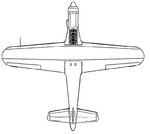Time to gather all of the Fw-187 fanboys into one place  - how would the ideal heavy fighter for the LW, in 1940, looked like if you were in charge?
- how would the ideal heavy fighter for the LW, in 1940, looked like if you were in charge?
Two engines are mandatory, and 2 crew members are minimum (so the flying in adverse weather is easier, also the night flying combat). The emphasis is, as always in fighter debates, on performance (speed, RoC), punch, range, protection, maneuvrability, suitability for mass production, all while using the historically available bits pieces (no DB-603 here, nor MG-151, or something else not produced on large scale in Germany in 1940). Bomb carrying ability is also a plus, as is ability to switch onto engines of another type, in case there is such a need.
The fighter should enter the fray in the time of invasion vs. West, May 1940.
Two engines are mandatory, and 2 crew members are minimum (so the flying in adverse weather is easier, also the night flying combat). The emphasis is, as always in fighter debates, on performance (speed, RoC), punch, range, protection, maneuvrability, suitability for mass production, all while using the historically available bits pieces (no DB-603 here, nor MG-151, or something else not produced on large scale in Germany in 1940). Bomb carrying ability is also a plus, as is ability to switch onto engines of another type, in case there is such a need.
The fighter should enter the fray in the time of invasion vs. West, May 1940.

